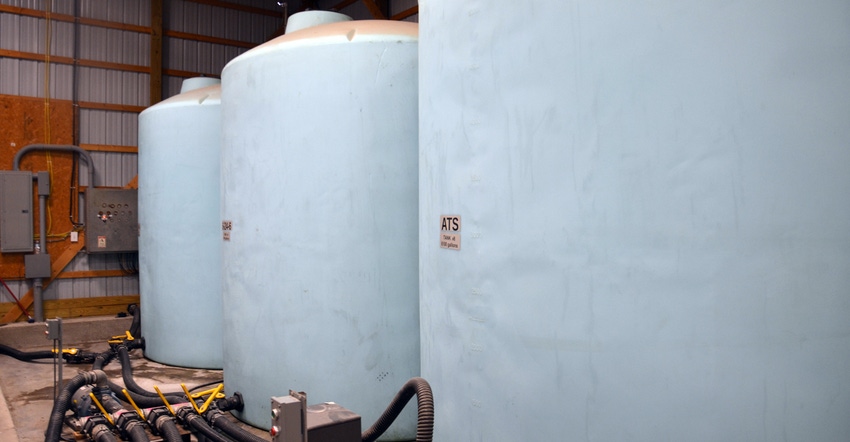
What lessons will you take from the current fertilizer and herbicide price spikes and shortages? Maybe you will want more on-farm storage to increase flexibility.
If adding tanks is in your future, publications prepared by Fred Whitford simplify the decision-making process. Whitford, director of Purdue Pesticide Programs, says all publications are online.
Here’s a brief look at publications about tanks:
Fiberglass tanks. Check out Fiberglass Tanks for Storage, Transport, and Application, PPP-093. If you’re considering a used fiberglass tank, Whitford suggests asking six questions:
What material did the tank hold before?
Did the tank hold the same material you will store in it?
Is the manufacturer’s sticker still attached? If so, call them for information on the tank.
What resin was used to make the tank?
Can you examine the inside of the tank by removing the manway?
Will the tank need repairs? If so, how much will they cost?
Poly tanks. PPP-77, Poly Tanks for Farms and Businesses, covers how to tell if current tanks could fail soon. “Poly tanks have a limited-use life if they’re outside due to the sun,” Whitford says. “The goal is to replace the tank before it ruptures.”
An early sign that a tank is losing integrity is called “crazing.” Rub a marker across 6-inch-square sections and then wipe. “Ink that remains is penetrating the surface due to deterioration,” Whitford says. “Don’t use it, or use it only for water.”
Micronutrient tanks. With more people applying micronutrients, Whitford recently prepared PPP-141, Selecting the Right Tank for Micronutrients. He poses eight questions:
How are micronutrients formulated? Chemical makeup of products could affect compatibility with materials used making the tank. Do your homework.
Is the tank material compatible with micronutrient formulas? All stainless steel is not the same. The agriculture industry often opts for 304 carbon stainless because it’s cheaper. However, some micronutrients corrode it, making 316 a better choice.
Can you completely remove settled micronutrients? Cone-shaped or slope-bottomed tanks make it easier to remove product if solids settle out.
Can you protect tanks from freezing? Some micronutrients freeze at different temperatures than water. Know how freezing affects handling and efficacy.
What tank size do you need for a season’s worth of product? If you’re installing a new tank inside, knowing total height isn’t enough. Calculate tipping height too.
When do you get delivery? These tanks may require custom ordering. Pin down when you can expect delivery.
Will crane operators be available? We’re talking about large tanks. You don’t call today for a crane tomorrow. Schedule ahead.
Will new capacity exceed allowable storage limits?
The Office of Indiana State Chemist considers micronutrients as fertilizer. Storing micronutrients above 55 gallons adds to capacity, which triggers diking.
Steel tanks. PPP-105, Steel Tanks for Storing and Transporting Pesticides and Fertilizers, suggests reviewing characteristics of products you will store in a steel tank before buying the tank. What is the product’s pH? How much does the product weigh? How corrosive is it?
“Painting mild steel tanks is recommended even when located inside because condensation can occur, leading to rust,” Whitford says. “Use quality paint and repaint when necessary.”
About the Author(s)
You May Also Like




